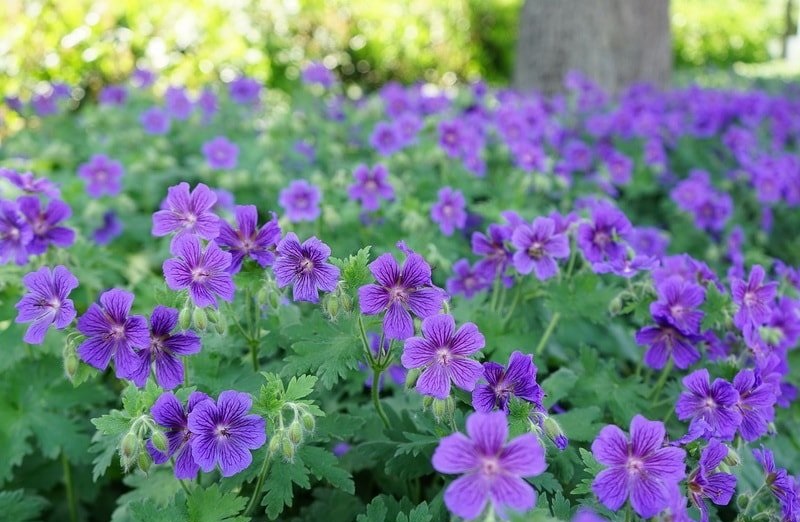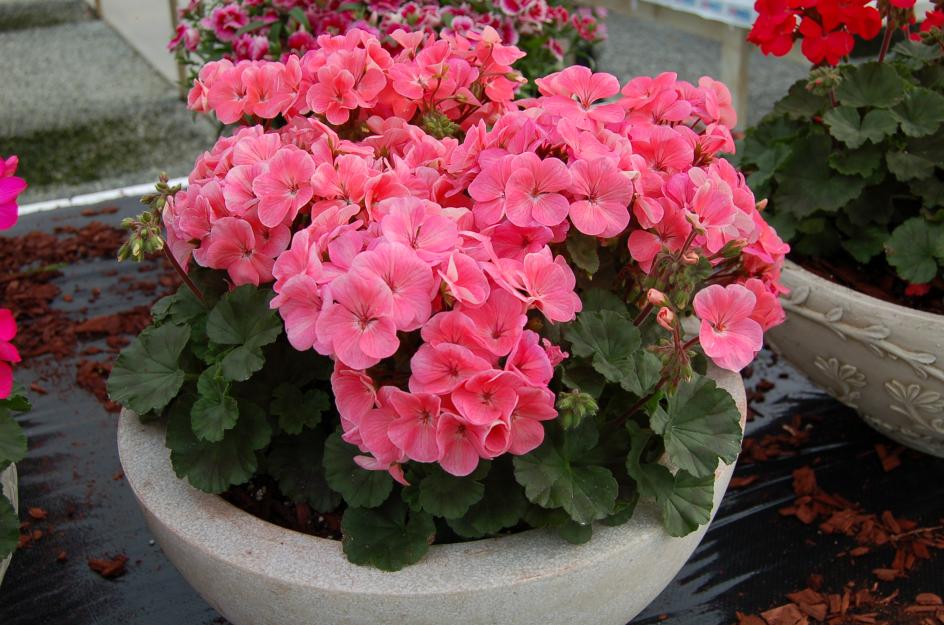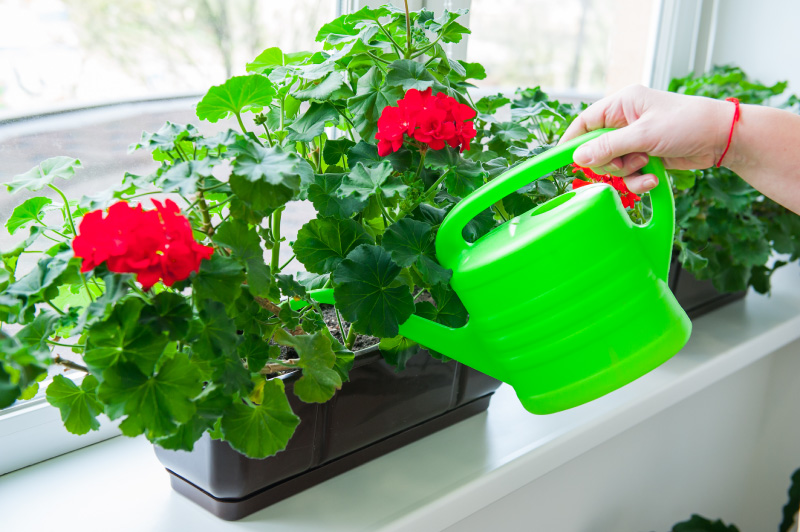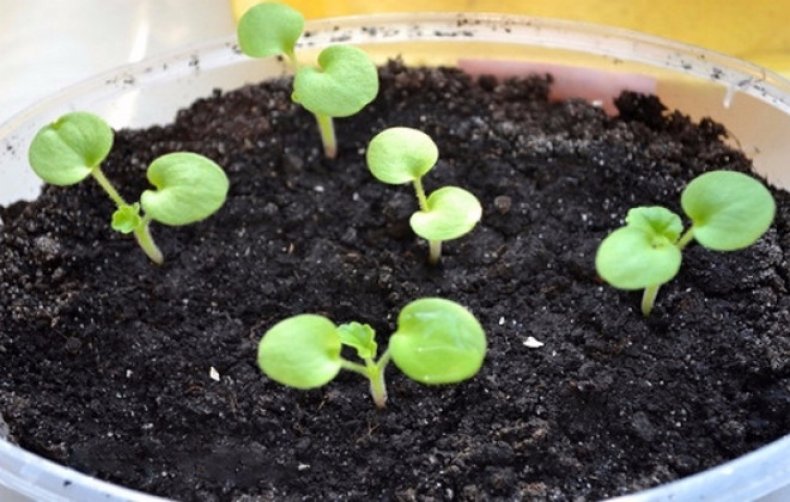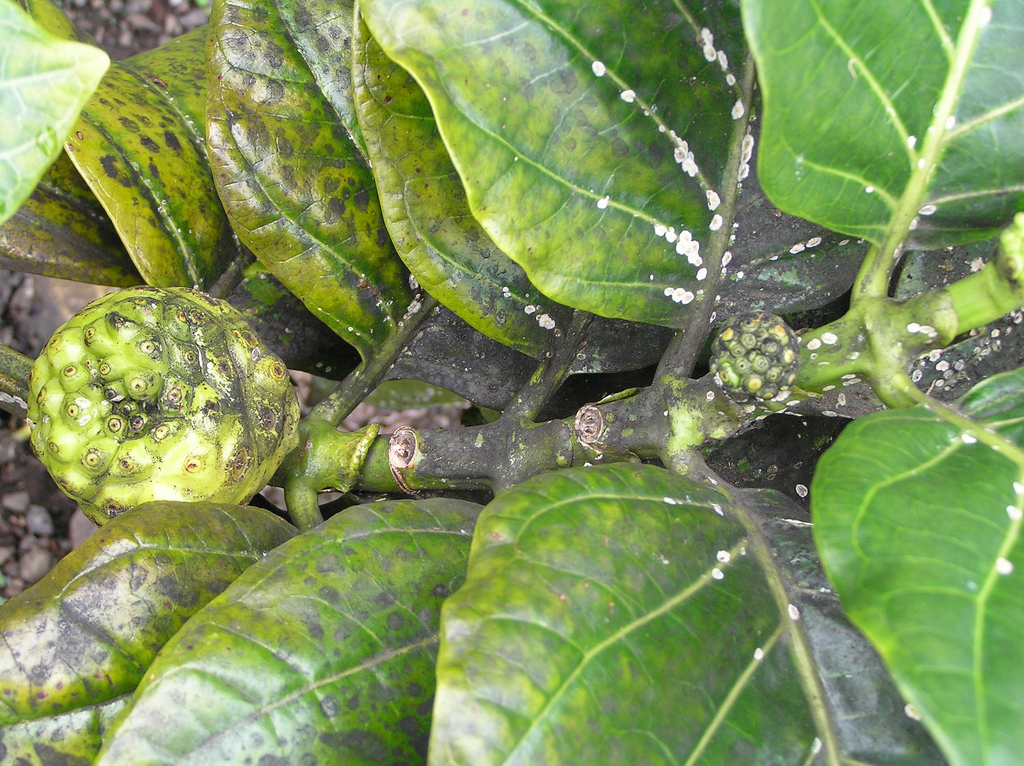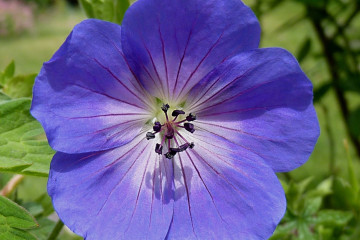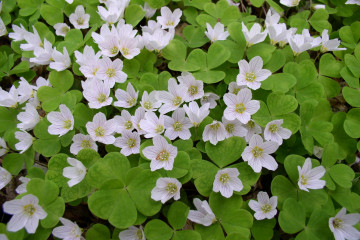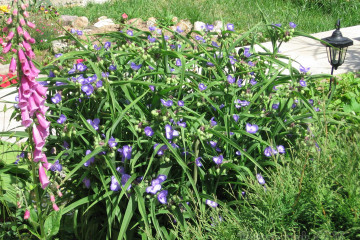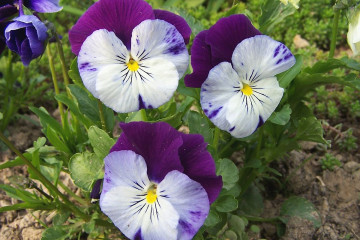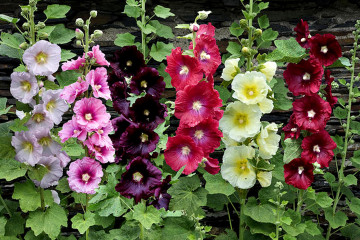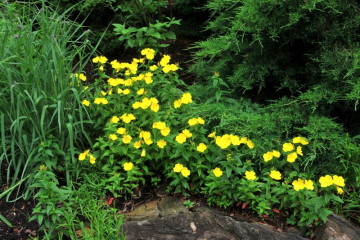Perennial garden geranium - planting and care
Content:
Garden geranium is one of the most common perennial or annual plants. Geranium is beautiful at any time of the year. Readers will be interested to know what garden geranium looks like for perennial planting and caring for it.
Perennial garden geranium
This beautiful flowering plant belongs to the Geraniev family. The shrub is winter-hardy, sometimes evergreen. The bush grows from 10 to 75 cm in height. Depending on the variety, the leaves are colored from silvery to dark green. Their sizes can vary from small to large.
There are several buds on the perennial stem. The flowers are simple, have 5 petals. Coloring - from white to almost black.
The plant grows in one place for a long time, tolerates drought and frost well, and is resistant to diseases. Even without flowers, it is attractive and beautiful in its own way.
Geranium in the street in pots
The plant can be successfully grown in pots or pots on the street and in the summer cottage. Due to its aesthetic properties, it is perfect for landscape design. With good care, it will bloom throughout the summer.
For the winter, the pots with the plant must be removed indoors, otherwise it will freeze. Geranium will bloom all summer long if the soil in the pot is slightly acidic or neutral. Be sure to include peat and river sand in the soil.
When and how it blooms
The shape, type of geranium flowers differ significantly from variety to variety. The size of the flower changes depending on the conditions of the plant, feeding, watering, etc. The plant blooms for a long time and abundantly. The size of the flowers varies from 2 to 5 cm.
Types of flowers
There are many varieties of flowers. They all differ in color. Most often you can find:
- delicate pink flowers of the varieties Sanguineum Vision, Cantabrigiense;
- bright blue and white or blue Pratense Splish Splash;
- dark red, burgundy or purple flowers of the Phaeum Samobor variety;
- bright red in the Balkan geranium;
- pinkish in marsh geraniums;
- purple, terry in gorgeous or royal geraniums.
Flower shapes
The shape of the geranium flower is a regular corolla of five petals.
Flowering period
Active flowering begins at the end of May and lasts until the beginning of September, sometimes even longer if the weather is favorable.
Care features
Planting and caring for geraniums outdoors does not require special skills. Even a novice amateur gardener will take great care of her. The main requirement is regular watering. Plants are not particularly demanding on the composition of the soil, some varieties thrive on rocky soils. They are equally good in the sun and in semi-shaded areas. In wetlands, the plant grows poorly and is sick.
Where to plant
Since there are a lot of geranium varieties, the plant can be planted in almost any area with different levels of illumination and moisture.
What soil does geranium like
The land for geraniums must be fertile. There should be no stagnant water at the landing site, due to which the site is capable of swamping.If the soil contains too much clay, then peat and compost are added to it.
Watering
The plant requires regular and moderate watering. You need to water at the root. Moisture is retained using mulch.
The ideal watering frequency is to do it at a time when the soil is dry.
Top dressing
Geranium does not need intensive feeding. For normal flowering, ordinary humus is quite enough. An excessive amount of fertilizer has a bad effect on the flower formation process.
Fertilizers containing phosphorus are used before flowering. Potash fertilizers are applied during the appearance of flowers and ensure the growth of lush, beautiful inflorescences.
What temperature can it withstand outside
The normal average temperature for a flowering plant is 18 to 25 degrees. If there are geranium flowers in a pot, you need to remove it indoors at a temperature below 10 degrees.
The plant is able to withstand temperatures up to 5 degrees. When the temperature drops, the growing season stops. Since geranium is winter-hardy, it overwinters well under a layer of snow. If the winter has little or no snow, then with the onset of cold weather it is enough to cover it with leaves or spruce branches. In the south, geraniums can hibernate without shelter during warm winters.
Pruning
The geranium needs to be trimmed. This is done to keep the shrub shape and flower density optimal. With the help of pruning, the decorative appearance of the plant is maintained.
It also helps keep the shoots healthy. Dried shoots are a favorable breeding ground for gray rot.
How garden geranium reproduces
The most common ways to propagate geraniums at home are cuttings, dividing the bush and sowing seeds.
Germinating seeds
The stages of growing geraniums in the country from seeds are as follows:
- Choose the freshest geranium seeds.
- Prepare boxes or pots for sowing by filling them with peat mixture and sand. Moisten the earth.
- Spread the seeds on the surface of the soil mixture, lightly sprinkling them.
- Cover the box with foil to form a greenhouse.
- Periodically moisten the ground, ventilate until the first shoots appear.
- Open the film from time to time so that the seedlings get used to the drier indoor air.
- When the seedling has 2 or 3 leaves, carefully transplant it into a pot, leave it at home. When it gets stronger, you can take it out into the street.
Rooting cuttings
The algorithm of actions in this case will be as follows:
- In an adult plant, young shoots are cut off, always with small leaves.
- The resulting cuttings are placed in a vessel with water and kept in a warm room.
- The roots will appear in about 3 weeks.
- Cuttings with a strong root system are planted in a flower garden.
Sometimes, freshly cut cuttings are immediately planted in open soil. The cut site is treated with a root-forming solution. It is recommended to cover the cutting with a cut-necked plastic bottle.
When to plant geraniums outside
Many flower lovers are interested in when geraniums are planted in open ground in spring. Geraniums can be planted outdoors in spring. It is best to take out the flowerpot in the suburbs and the middle lane, when the threat of spring frosts has passed. Geranium on the street in a flowerpot feels great all summer.
By dividing the bush
At the same time, the old bush is updated, and several new ones are obtained. Division is best done in the fall because the plant is dormant. You need to do the following:
- Dig holes. They should be slightly larger than the roots of the plant. The distance between the seedlings is about 30 cm.
- Dig out a bush for dividing, shake out excess soil from the bushes.
- Find buds on the roots.The kidneys must be healthy and strong.
- With a sharp knife, divide the rhizome so that there is at least one bud on one part for renewal.
- Pour a small amount of sand, peat into the hole, plant parts of the plant there, carefully straightening the roots.
- Sprinkle the hole with earth and water it. The buds should be at the same depth as the previous plant.
Geranium transplant
The plant has been in satisfactory condition in one place for many years. However, it is prone to overgrowth, so it needs to be replanted. Planting geraniums in open ground in spring is optimal.
Pelargonium in the garden is transplanted with islands. They should be spaced at least 30 cm apart. The ideal time for the procedure is spring. The hole for planting geraniums in the flower bed should be made deep - this way the root system will branch out and feel good. The roots should be vertical. When transplanting, the seedling is laid so that the roots do not bend and do not go to the side.
After planting, caring for geraniums on the street is standard. It is watered abundantly, the soil is mulched. This avoids drying out.
Diseases and pests of garden geranium
Geraniums, like other flowering plants, are susceptible to diseases and pests. The most common ones are:
- Rust. Brown or rusty spots appear on the leaves. If the plant is left untreated, the leaves will fall off. You can get rid of the disease by using fungicides.
- Gray rot is found in the form of patches of a bluish tint and plaque. They cover almost the entire plant. Rot progresses in high humidity conditions. Geranium in this case should be treated with fungicidal preparations - Fundazol or Vitarol.
- Alternaria. With the development of the disease, brown spots grow on the leaves. You can improve the condition of the plant with the help of fungicides: Skora and the like.
- Verticillary wilting causes yellowing and wilting of the leaves. In the future, inflorescences are affected. For the prevention of the disease, Trichodermin is used.
- Late blight leads to rotting of the entire plant. You can get rid of the disease by reducing the frequency of watering and treating geranium with Ridomil and Previkur preparations.
- Aphids and whiteflies are eliminated with Marathon.
- Caterpillars can be destroyed with Monterey.
You can eliminate many diseases with the help of Messenger or aspirin tablets. One tablet is dissolved in 8 liters of water, after which the plant is sprayed with the resulting solution.
With proper care, garden geraniums bloom well and delight the eye with their beautiful flowers. Geranium bushes in the open field for the summer do not require special care, except for regular watering. With its many varieties and varieties, garden geraniums are ideal for design.
Video
